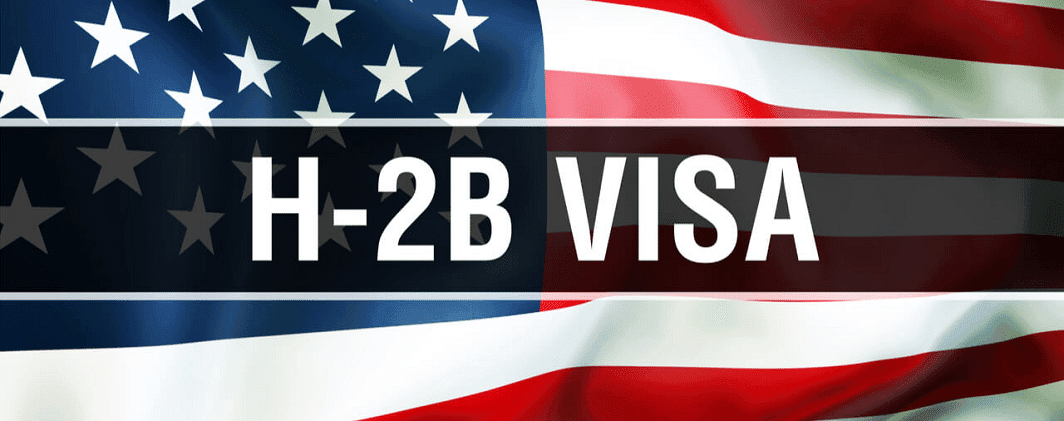DHS Announces Nearly 65,000 Additional H-2B Visas for FY 2025: Comprehensive Guide

The Dhs announces nearly 65,000 additional h-2b visas for fy 2025. U.S. Department of Homeland Security (DHS) has made a landmark announcement for fiscal year (FY) 2025. Introducing nearly 65,000 additional H-2B visas for temporary non-agricultural workers. This expansion of the H-2B visa program comes as a response to significant labor shortages faced by industries. Across the United States that rely on seasonal and temporary workers.
The dhs announces nearly 65,000 additional h-2b visas for fy 2025. visa program is crucial for industries like hospitality. Construction landscaping, and seafood processing where. There is a constant demand for labor especially during peak seasons. This article explores the details of the DHS announcement. The processes involved the industries impacted and the potential. Challenges and benefits for both U.S. employers and foreign workers.
What Are H-2B Visas?
The H-2B visa program enables U.S. employers to hire foreign workers for temporary, non-agricultural jobs. These positions are often seasonal and essential in industries where peak demand occurs during certain times of the year. For example, construction companies may need additional workers during the summer. And hospitality businesses require extra staff during the holiday season.
Under the dhs announces nearly 65,000 additional h-2b visas for fy 2025. visa program, employers can hire foreign workers when. There are no sufficient U.S. workers available for temporary, low-wage jobs. These workers can come from various countries and must meet specific criteria to qualify for temporary employment in the U.S.
Why the Need for More H-2B Visas?
The decision to increase the number of H-2B visas for FY 2025 comes. As a response to ongoing labor shortages in critical industries. U.S. businesses have faced difficulty in finding enough domestic workers willing to take on seasonal, low-wage jobs. These shortages have been further exacerbated by several factors:
- Post-COVID Labor Shortages: Many businesses were left understaffed due to the pandemic, and the recovery process has not been smooth for industries reliant on seasonal labor.
- Demographic Shifts: The U.S. labor force has experienced significant demographic changes, with fewer young workers entering the job market to fill seasonal and low-skilled positions.
- Immigration Challenges: The tightening of immigration policies in recent years has led to a reduction in the number of workers entering the country on temporary work visas, making it difficult for industries to meet demand.
The additional 65,000 visas are designed to alleviate these challenges and provide the necessary workforce to fill temporary positions in industries that would otherwise struggle to operate during their peak seasons.
Key Breakdown of the 65,000 Additional H-2B Visas
The 65,000 additional H-2B visas announced for FY 2025 will be allocated in the following manner:
| Visa Category | Number of Visas | Purpose |
|---|---|---|
| Seasonal Employment | 55,000 | To fill positions in industries like hospitality, landscaping, and construction that experience seasonal demand. |
| Returning Workers | 10,000 | To allow foreign workers who have previously worked in the U.S. under the H-2B program to return for another season. |
| Total | 65,000 | Total number of additional H-2B visas for FY 2025. |
How Does the H-2B Visa Process Work?

Understanding the process for obtaining an H-2B visa is essential for both employers and foreign workers. Here’s an overview of the key steps involved in the H-2B visa process:
Labor Certification
The first step for employers seeking to hire foreign workers through the H-2B program is obtaining labor certification from the U.S. Department of Labor (DOL). This certification confirms that there are no sufficient U.S. workers available to fill the temporary positions, and that hiring foreign workers will not negatively impact wages or working conditions for domestic workers.
Petition Filing with USCIS
After receiving labor certification, employers must file a petition with U.S. Citizenship and Immigration Services (USCIS). This petition must detail the job description, the number of workers needed, and the wages to be offered. The petition also includes a demonstration of the employer’s efforts to recruit U.S. workers and comply with labor laws.
Foreign Worker Visa Application
Once the petition is approved by USCIS, foreign workers can apply for an H-2B visa at a U.S. consulate or embassy in their home country. After approval, they are granted a visa and can enter the U.S. to work for the employer who petitioned for them.
Employment and Duration
H-2B workers are typically granted visas for a specific period, often between three to nine months, depending on the nature of the work. If the employer requires workers for a longer period, the visa can be extended, but workers must leave the U.S. when their employment ends unless they qualify for another visa or work opportunity.
Which Industries Will Benefit Most from the Additional H-2B Visas?
The release of nearly 65,000 additional H-2B visas will benefit industries that depend on temporary labor during peak seasons. The following industries stand to gain the most from this visa expansion:
Hospitality and Tourism
The hospitality industry, including hotels, resorts, amusement parks, and restaurants, requires a large workforce during peak tourist seasons. Positions such as housekeepers, cooks, waitstaff, and maintenance workers are essential to maintaining operations. The additional H-2B visas will help hospitality businesses hire the seasonal labor necessary to meet the demand from tourists during busy seasons.
Landscaping and Grounds Maintenance
Landscaping businesses, particularly in urban areas and regions with significant tourism, often face a surge in demand during the spring and summer months. Workers in landscaping are needed to perform tasks such as lawn maintenance, garden care, and landscaping design. The additional visas will allow these businesses to hire the necessary workers to meet peak demand.
Construction
The construction industry, which is vital to the U.S. economy, often requires temporary workers for seasonal projects. This includes roles like carpenters, masons, electricians, and general laborers. Seasonal demands in construction can fluctuate due to weather, economic conditions, and public works projects, and the additional H-2B visas will allow employers to meet this demand by hiring more foreign workers.
Seafood Processing
In coastal areas, the seafood industry is highly reliant on temporary workers to process fish and shellfish during harvesting seasons. Seasonal demand for workers in this sector is high, and the additional H-2B visas will provide the labor necessary to keep processing plants running during peak harvesting periods.
Challenges and Criticisms of the H-2B Visa Program

While the expansion of the H-2B visa program is welcomed by many employers, it is not without its critics. Some of the primary challenges and concerns surrounding the H-2B program include:
Impact on U.S. Workers
A common concern is that hiring foreign workers through the H-2B program may displace U.S. workers. Critics argue that businesses might prefer to hire foreign workers at lower wages, potentially reducing job opportunities for domestic workers. However, studies show that H-2B workers typically fill jobs that U.S. workers are unwilling or unable to take, especially in low-wage, seasonal roles.
Exploitation of Workers
There are concerns about the potential for the exploitation of foreign workers under the H-2B program. Some employers might not adhere to the regulations regarding wages, working conditions, and housing. To address these concerns, the Department of Labor enforces strict regulations to protect H-2B workers and ensure they receive fair compensation and treatment.
Administrative Burden
The H-2B visa process can be complex and time-consuming for employers, particularly smaller businesses that may not have the resources to navigate the paperwork and regulations. The multi-step process includes obtaining labor certification, submitting a petition to USCIS, and ensuring compliance with labor laws, all of which can be burdensome for smaller employers.
Benefits of the Additional H-2B Visas
The additional 65,000 H-2B visas will provide numerous benefits for both U.S. employers and foreign workers:
Filling Labor Gaps in Key Industries
The primary benefit is that the additional visas will allow U.S. employers to fill critical labor gaps during peak seasons. Without these workers, many businesses would be forced to reduce operations or even close temporarily due to a lack of staff.
Supporting U.S. Economic Growth
By ensuring that key industries can continue to operate at full capacity, the H-2B program plays a critical role in supporting U.S. economic growth. Industries such as hospitality, construction, and landscaping contribute significantly to the economy, and the availability of temporary foreign workers ensures these sectors remain vibrant.
Offering Opportunities for Foreign Workers
The H-2B program provides valuable job opportunities for foreign workers, many of whom come from countries with limited employment options. By participating in the program, workers gain the opportunity to earn wages and gain experience that may benefit them in their home countries.
FAQs About the DHS Announcement and the H-2B Visa Program
How long can an H-2B worker stay in the U.S.?
H-2B workers are typically allowed to stay in the U.S. for the duration of their employment, usually ranging from a few months to one year. The visa can be extended if needed, but workers must leave the U.S. once their employment ends unless they can obtain another visa.
Can H-2B workers apply for permanent residency?
No, the H-2B visa is a temporary visa, and workers on this visa cannot directly apply for permanent residency (a green card) through the H-2B program. However, some workers may be able to transition to other visa categories if they meet the eligibility requirements.
Can employers hire workers from any country for H-2B positions?
Employers can hire workers from countries that are eligible for the H-2B program. These countries are designated by the U.S. Department of State and may change over time. Generally, the countries involved are those with strong labor forces willing to send workers for temporary employment in the U.S.
Conclusion: A Positive Step for Employers and Workers
The announcement of nearly 65,000 additional H-2B visas for FY 2025 is a positive development for U.S. employers and industries that rely on seasonal labor. By expanding the program, the DHS helps to address labor shortages, ensuring businesses can continue to operate smoothly during peak seasons.
While challenges and concerns remain, the H-2B program remains an essential tool for supporting U.S. industries and providing opportunities for foreign workers. As the U.S. economy continues to recover, the expansion of the H-2B visa program will play a key role in shaping the future of labor markets across the nation.



